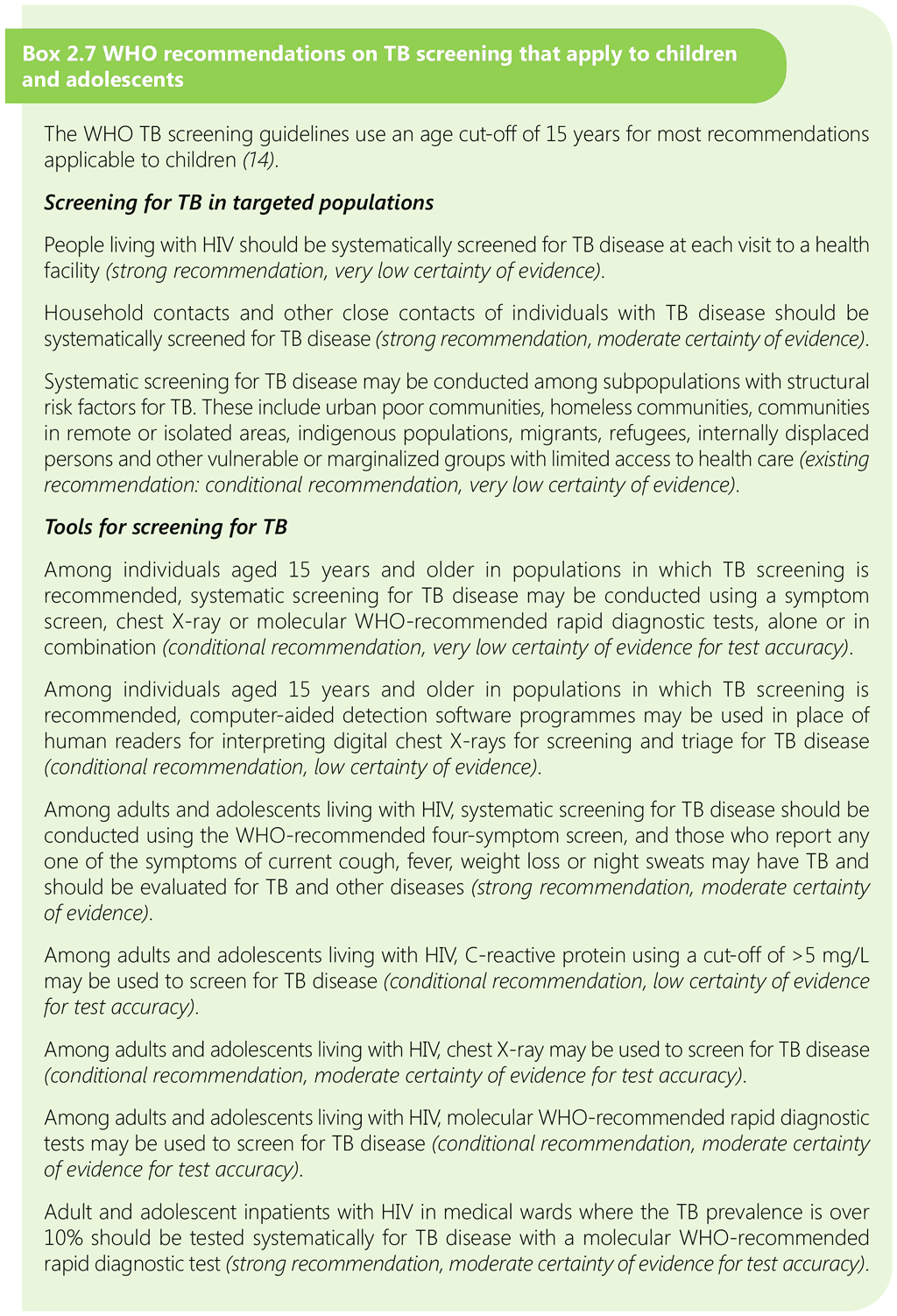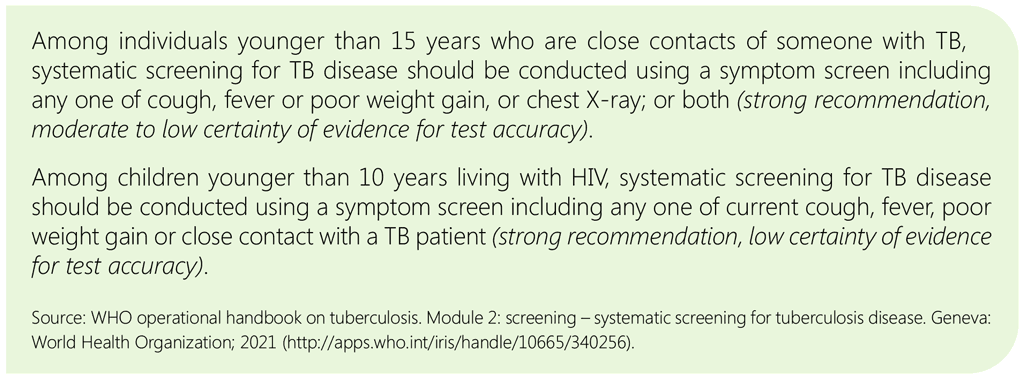Book traversal links for 2.3 TB screening approaches in children and adolescents
Screening serves to identify children and adolescents who may have TB disease (presumptive TB) and who need further evaluation to make or confirm a TB diagnosis (see Chapter 4). It also helps to identify children and adolescents who are eligible for and could benefit from TPT. A screening test is not intended to be a diagnostic tool. People with positive results on a screening test should undergo further diagnostic evaluation.
Children and adolescents living with HIV should be systematically screened for TB disease at each visit to a health facility. Child and adolescent household contacts of people with TB disease should be systematically screened for TB disease during contact investigation or during follow-up of the index patient’s course of treatment.
Among people aged 15 years and over in populations in which TB screening is recommended, systematic screening for TB disease may be conducted using a symptom screen, CXR, molecular WHO-recommended rapid diagnostic tests (mWRDs) or other tests (see Box 2.7), alone or in combination.
Among people aged under 15 years who are close contacts of a person with TB, systematic screening for TB disease should be conducted using a symptom screen (any one of cough for more than 2 weeks, fever for more than 2 weeks or poor weight gain in past 3 months) or CXR, or both.
Screening children for TB disease is imperative to detect TB earlier, start treatment earlier and increase the likelihood of better treatment outcomes (13, 14). As young children may have EPTB disease with or without pulmonary involvement, HCWs must be aware of symptoms that indicate TB at other sites (e.g. lymphatic, abdominal, meningeal or osteoarticular TB). The symptoms of TB are often underrecognized in children because they are less specific and overlap with those of common childhood diseases, often leading to delayed diagnosis. Certain forms of TB, especially TB of the central nervous system (CNS), carry a high risk of death or permanent disability when detected late, even if they are treated. TBM, disseminated TB and spinal TB are medical emergencies that must be recognized quickly with immediate referral to the appropriate level of care. TB may also present with other features of severity (e.g. severe pneumonia, severe malnutrition or severe anaemia) that require inpatient care.
The risks of severe disease and death from TB can be reduced by BCG vaccination (23, 24). Protection is incomplete, however, and the considerations for screening discussed in this section apply regardless of BCG immunization status. Children who should be targeted for screening are those at particularly high risk of TB disease, especially those in close contact with a person with TB, and children aged 0–9 years living with HIV. For adolescents aged 10–19 years living with HIV, a wider range of tools and tests are available for screening (see Box 2.7).


Countries are encouraged to monitor and evaluate the yield of TB screening approaches among children and adolescents to be screened, including child close or household contacts and children living with HIV, disaggregated by screening tools and algorithms, to broaden the evidence base on the yield, costs, safety and clinical outcomes of different screening strategies.
 Feedback
Feedback